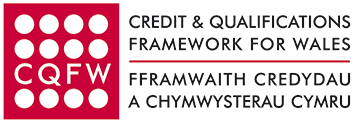| 1. |
Understand current legislation national guidelines, policies, protocols and good practice related to caring for individuals with urethral catheters. |
|
| 1.1 | Summarise the current legislation national guidelines, policies, protocols and good practice related to caring for individuals with urethral catheters. | | 1.2 | Explain own responsibilities and accountability in relation to current legislation, national guidelines, organisational policies and protocols which affect work practice when carrying out care activities. |
|
| 2. |
Understand the procedure of urethral catheterisation. |
|
| 2.1 | Describe the anatomy and physiology of the male and female lower urinary tract. | | 2.2 | Describe lower urinary tract functions and continence status. | | 2.3 | Describe the causative factors which determine the need for urethral urinary catheters. | | 2.4 | Explain the effects of urethral catheterisation on an individual’s comfort and dignity. | | 2.5 | Describe when to undertake urinalysis, obtain a catheter specimen of urine (CSU) or screen for multi resistant bacteria. |
|
| 3. |
Understand the use and application of catheter care equipment. |
|
| 3.1 | Describe catheter care equipment that can be used to meet individuals specific needs. | | 3.2 | Describe the types of catheter care advice to give to individuals | | 3.3 | Describe the indications, mode of action, side-effects, cautions, contra indications and potential interactions of urethral catheter care. | | 3.4 | Describe the medication, antibiotics, anaesthetic agents and associated solutions used for individuals with urethral catheters. |
|
| 4. |
Be able to prepare individuals to carry out urethral catheters care. |
|
| 4.1 | Confirm the individual’s identity and gain valid consent | | 4.2 | Communicate accurate information in a way that is sensitive to the personal beliefs and preferences of the individual. | | 4.3 | Agree the level of support required with the individual. | | 4.4 | Apply standard precautions for infection prevention and control. | | 4.5 | Apply health and safety measures relevant to the procedure and environment. | | 4.6 | Carry out preparatory checks against the individual’s care plan. |
|
| 5. |
Be able to carry out care for individuals with urethral catheters. |
|
| 5.1 | Support the individual and relevant others to carry out catheter care in accordance with local policy and protocol. | | 5.2 | Use catheter care equipment in line with manufacturers guidance, reporting any failure/malfunction in line with local policy and protocol. | | 5.3 | Use and store equipment and materials in accordance with local policy and protocol. | | 5.4 | Dispose of catheter related equipment in accordance with local policy and protocol. | | 5.5 | Measure and record any urethral output within local policy and protocol. |
|
| 6. |
Be able to monitor and check individuals undergoing urethral catheter care. |
|
| 6.1 | Monitor the individual's condition for adverse effects and potential complications, taking appropriate action in line with local policy and protocol. | | 6.2 | Observe and maintain cleanliness of the meatus. | | 6.3 | Terminate the use of a urethral catheter in accordance with local policy and protocol. | | 6.4 | Record information in the ongoing catheter care records in line with local policy and protocol. |
|
